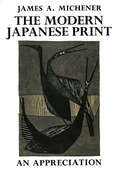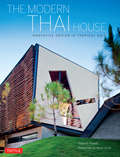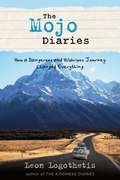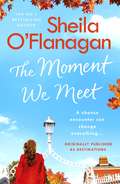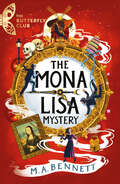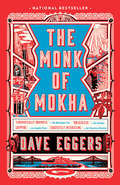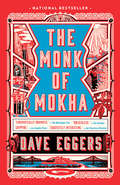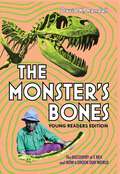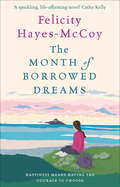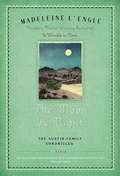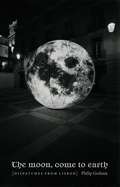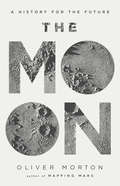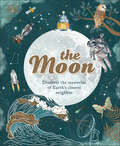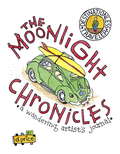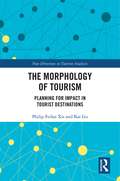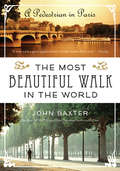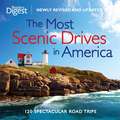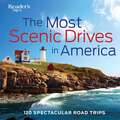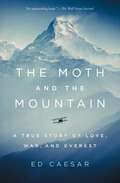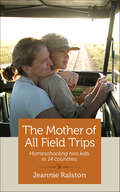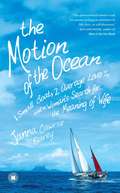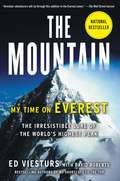- Table View
- List View
The Modern Japanese Print: An Appreciation
by James A. MichenerThis is an ebook version of a very rare Japanese woodblock print collection. Originally published in 1962 in a limited edition of 475 copies, The Modern Japanese Print soon became a collector's item.<P><P>Included in the folio-sized volume were ten original woodblock prints by contemporary Japanese artists. The idea for this unique presentation had originated with author, James Michener who hoped to assist this little known group of dedicated men achieve wider recognition. The original works of art in The Modern Japanese Print were selected in a contest judged by art experts in the United States and Japan who sought to find the best examples representing " the richness and power of the modern Japanese print movement ."The ten original woodblock prints are reproduced in full color; Mr. Michener's text is retained completely. Aside from the artists whose works are shown, the author discusses many others who are contributing to the continuing development of this art form. James Michener's perceptive, informative introduction to modern Japanese printmaking, with commentary on each of the works, including full technical details, is written with critical acumen and notable prose.
The Modern Thai House
by Robert Powell Albert Lim Ks[A tremendous body of sophisticated and sensitively designed architectural work has been produced in Thailand in the first decade of the 21st century. The 25 houses in The Modern Thai House illustrate the radical new ideas coming from a dynamic younger generation of architects who are producing work comparable with and sometimes even surpassing the very best architecture in the world.] Most of these architects were trained in the U.S. or U.K. and reflect not only American and European sensibilities but also affinities with their contemporaries in Asia-including Japan, China, Singapore, and Bali-all hotbeds for innovation in modern design. The houses in this book are readily accessible from Bangkok, Phuket, and Chiangmai. They reflect a wide variety of concerns and solutions, such as: sustainability; responses to climate; strategies for cooling with minimal electricity; openness versus security in a large metropolis such as Bangkok; cultural sensitivity and responsiveness, as evidenced in a "three-generation house," built for a society in which the extended family is still prevalent; and cultural memory, as in the use of elements such as pilings, verandahs, and steeply pitched roofs with large overhangs that echo traditional Thai designs.[Nurtured by an increasingly knowledgeable and wealthy clientele, modern architecture in Thailand is emerging with a variety of innovative architectural expressions.]
The Mojo Diaries
by Leon LogothetisFrom the bestselling author of The Kindness Diaries, former broker, world traveler and philanthropist, Leon Logothetis, comes a pithy guide on how to get your Mojo back!Calling all adventurists, armchair travelers, or anyone feeling a little bored by the daily monotony of life! From the bestselling author of The Kindness Diaries, former broker, world traveler and philanthropist, Leon Logothetis, comes a pithy guide on how to get your Mojo back...wrapped in a hilarious story about his misadventures as a participant in the Mongol Rally.
The Moment We Meet: Stories of love, hope and chance encounters by the No. 1 bestselling author
by Sheila O'FlanaganWho you meet can change your life for ever...A wonderful collection of short stories from Sheila O'Flanagan, Sunday Times bestselling author of THE MISSING WIFE and THE HIDEAWAY. The Moment We Meet was previously published as Destinations. Featuring an exclusive Q&A with Sheila O'Flanagan...Perfect for readers of Catherine Alliott and Marian Keyes. A young PR girl has the night of her life at a glitzy work event and finds more than just her face splashed across the newspapers the next day. Two women listen in on each other's phone calls and learn more about themselves than they ever expected. And a wife faces up to the truth that her husband isn't a man she feels safe with.Everyone aboard this train is on a journey - and they all have a story to tell...Praise for Sheila O'Flanagan's bestselling novels:'Wonderfully escapist...captivating' Daily Express'A beautiful backdrop to the story of a woman finding acceptance and new beginnings' Woman & Home'A hugely enjoyable romance, written with pace and heart' Sunday Mirror'Page-turner' Bella'I read the book in one sitting as it was so enjoyable, full of romance and kept you riveted until the last page' Woman's Way
The Moment We Meet: Stories of love, hope and chance encounters by the No. 1 bestselling author
by Sheila O'FlanaganWho you meet can change your life for ever...A wonderful collection of short stories from Sheila O'Flanagan, Sunday Times bestselling author of THE MISSING WIFE and THE HIDEAWAY. The Moment We Meet was previously published as Destinations. Featuring an exclusive Q&A with Sheila O'Flanagan...Perfect for readers of Catherine Alliott and Marian Keyes. A young PR girl has the night of her life at a glitzy work event and finds more than just her face splashed across the newspapers the next day. Two women listen in on each other's phone calls and learn more about themselves than they ever expected. And a wife faces up to the truth that her husband isn't a man she feels safe with.Everyone aboard this train is on a journey - and they all have a story to tell...Praise for Sheila O'Flanagan's bestselling novels:'Wonderfully escapist...captivating' Daily Express'A beautiful backdrop to the story of a woman finding acceptance and new beginnings' Woman & Home'A hugely enjoyable romance, written with pace and heart' Sunday Mirror'Page-turner' Bella'I read the book in one sitting as it was so enjoyable, full of romance and kept you riveted until the last page' Woman's Way
The Moment We Meet: Stories of love, hope and chance encounters by the No. 1 bestselling author
by Sheila O'FlanaganWho you meet can change your life for ever...A wonderful collection of short stories from Sheila O'Flanagan, Sunday Times bestselling author of THE MISSING WIFE and THE HIDEAWAY. The Moment We Meet was previously published as Destinations. Featuring an exclusive Q&A with Sheila O'Flanagan...Perfect for readers of Catherine Alliott and Marian Keyes. A young PR girl has the night of her life at a glitzy work event and finds more than just her face splashed across the newspapers the next day. Two women listen in on each other's phone calls and learn more about themselves than they ever expected. And a wife faces up to the truth that her husband isn't a man she feels safe with.Everyone aboard this train is on a journey - and they all have a story to tell...Praise for Sheila O'Flanagan's bestselling novels:'Wonderfully escapist...captivating' Daily Express'A beautiful backdrop to the story of a woman finding acceptance and new beginnings' Woman & Home'A hugely enjoyable romance, written with pace and heart' Sunday Mirror'Page-turner' Bella'I read the book in one sitting as it was so enjoyable, full of romance and kept you riveted until the last page' Woman's Way(P)2018 Headline Publishing Group Ltd
The Mona Lisa Mystery: Book 3 - A time-travelling adventure around Paris and Florence (The Butterfly Club #3)
by M.A. BennettWould you risk the future to change the past?Luna, Konstantin and Aidan are time-travelling thieves working for The Butterfly Club.When they are asked to steal a little-known painting called the Mona Lisa, Aidan can only think of one man who can make things disappear – the magician, Harry Houdini. And as luck would have it, Houdini cannot resist a challenge.The three children and Houdini travel to 1911 Paris where they face an impossible task – stealing a painting right off the wall of the fortress-like Louvre Museum.As Houdini prepares for the theft, a heist which will require him to pull off his greatest ever trick, the time-thieves realise that the Mona Lisa is smiling because she holds a secret. Her creator, Leonardo Da Vinci, hid mysterious codes within the painting.The race is on to solve the puzzle in time...
The Monk of Mokha
by Dave EggersFrom the bestselling author of The Circle and What Is the What, the true story of a young Yemeni-American man, raised in San Francisco, who dreams of resurrecting the ancient art of Yemeni coffee but finds himself trapped in Sana'a by civil war.Mokhtar Alkhanshali grew up in San Francisco, one of seven siblings brought up by Yemeni immigrants in a tiny apartment. At age twenty-four, unable to pay for college, he works as a doorman, until a statue of an Arab raising a cup of coffee awakens something in him. He sets out to learn the rich history of coffee in Yemen and the complex art of tasting and identifying varietals. He travels to Yemen and visits countless farms, collecting samples, eager to bring improved cultivation methods to the countryside. And he is on the verge of success when civil war engulfs Yemen in 2015. The US Embassy closes, Saudi bombs began to rain down on the country, and Mokhtar is trapped in Yemen. Desperate to escape, he embarks on a passage that has him negotiating with dueling political factions and twice kidnapped at gunpoint. With no other options, he hires a skiff to take him, and his coffee samples, across the Red Sea. A heart-pounding true story that weaves together the history of coffee, the ongoing Yemeni civil war, and the courageous journey of a young man--a Muslim and a US citizen--following the most American of dreams.
The Monk of Mokha
by Dave Eggers<p><i>The Monk of Mokha</i> is the exhilarating true story of a young Yemeni American man, raised in San Francisco, who dreams of resurrecting the ancient art of Yemeni coffee but finds himself trapped in Sana’a by civil war. <p>Mokhtar Alkhanshali is twenty-four and working as a doorman when he discovers the astonishing history of coffee and Yemen’s central place in it. He leaves San Francisco and travels deep into his ancestral homeland to tour terraced farms high in the country’s rugged mountains and meet beleagured but determined farmers. But when war engulfs the country and Saudi bombs rain down, Mokhtar has to find a way out of Yemen without sacrificing his dreams or abandoning his people.</p>
The Monster's Bones (Young Readers Edition) (Young Readers Edition) (Young Readers Edition) (Young Readers Edition): The Discovery of T. Rex and How It Shook Our World: The Discovery Of T. Rex And How It Shook Our World
by David K. RandallThe thrilling tale of America’s early paleontologists and the discovery of the first T. Rex fossil, now adapted for young readers. From the dust of the Gilded Age Bone Wars, two vastly different men emerge to fill the empty halls of New York’s struggling American Museum of Natural History: socialite Henry Fairfield Osborn and intrepid fossil hunter Barnum Brown. When Brown unearths the first Tyrannosaurus Rex fossils, Osborn sees a path to save his museum from irrelevancy. As the public turns out in droves to cower before this bone-chilling giant of the past and wonder at the mysteries of its disappearance, Brown and Osborn turn dinosaurs into a beloved part of culture. In this vivid and engaging young readers adaptation, New York Times best-selling author David K. Randall journeys from prehistory to present day, from remote Patagonia to the unforgiving Badlands of the American West to the penthouses of Manhattan. The Monster’s Bones reveals how a monster of a bygone era ignited a new understanding of our planet and our place within it.
The Month of Borrowed Dreams: A feel-good summer novel (Finfarran #4)
by Felicity Hayes-McCoyFinfarran Book 4'A sparkling, life-affirming novel -- sunshine on the page' Cathy KellySummer is on its way, and Lissbeg librarian Hanna Casey has started a club showing films based on popular novels. But soon the club's members find dramatic twists and turns happening in their own lives on Ireland's west coast.Hanna's daughter Jazz finally feels like she can call Lissbeg home. But when her life is turned upside down, will she return to London to make a fresh start?Aideen is afraid that her romance with Conor won't survive the pressures of their planned double wedding with overbearing Eileen and manipulative Joe. Meanwhile, Saira Khan is determined to help a troubled new arrival to Finfarran.And could Hanna's own newfound happiness to Brian be threatened by the return of her ex-husband Malcolm?As the club prepares for the first meeting of the summer, they'll all face hard choices. But will they get the happy endings they deserve?'A heartwarming novel' Irish Independent
The Moon by Night (Austin Family Chronicles #2)
by Madeleine L'EngleVicky Austin, almost 15, tells about her family's summer cross-country camping trip. From the Austin series. During this camping trip, Vicky tries to come to terms with her feelings about life, God, boys, and the possibility of starting school in New York City in the fall.
The Moon, Come to Earth: Dispatches from Lisbon
by Philip GrahamThe author offers an expanded edition of a popular series of dispatches originally published on McSweeneys, an exuberant yet introspective account of a year's sojourn in Lisbon with his wife and daughter.
The Moon: A History for the Future (Economist Books)
by Oliver Morton The EconomistAn intimate portrait of the Earth's closest neighbor--the Moon--that explores the history and future of humankind's relationship with itEvery generation has looked towards the heavens and wondered at the beauty of the Moon. Fifty years ago, a few Americans became the first to do the reverse--and shared with Earth-bound audiences the view of their own planet hanging in the sky instead.Recently, the connection has been discovered to be even closer: a fragment of the Earth's surface was found embedded in a rock brought back from the Moon. And astronauts are preparing to return to the surface of the Moon after a half-century hiatus--this time to the dark side.Oliver Morton explores how the ways we have looked at the Moon have shaped our perceptions of the Earth: from the controversies of early astronomers such as van Eyck and Galileo, to the Cold War space race, to the potential use of the Moon as a stepping stone for further space exploration.Advanced technologies, new ambitions, and old dreams mean that men, women, and robots now seem certain to return to the Moon. For some, it is a future on which humankind has turned its back for too long. For others, an adventure yet to begin.
The Moon: Discover the Mysteries of Earth's Closest Neighbour (Space Explorers)
by Dr. Sanlyn Buxner Pamela Gay Georgiana KramerDiscover the mysteries of Earth&’s closest neighbor in this incredible guide to the Moon. This charming book is the perfect introduction for young readers who want to learn about every aspect of the moon. The Moon features breakdowns of the Moon&’s formation and geography, the lunar phases, a history of NASA&’s Apollo missions, the Moon&’s effect on Earth&’s tides and nocturnal animals, recent scientific discoveries, and so much more!This fascinating guide introduces 7-9 year olds to the moon&’s past, present, and future, through stunning illustrations, photographs, and fascinating information. Packed with mind-blowing facts, this incredible book of the moon is perfect for space lovers everywhere. Explore this wonderful book about the moon, featuring:- In-depth information, backed up by space photography, probe images, illustrations, and fun diagrams- Stunning, dreamy illustrations, making this title a perfect gift, as well as a solid reference book - Easy-to-digest sections, each filled with incredible facts and visuals- The entire subject of the Moon – including its formation and geography, the lunar phases, a history of NASA&’s Apollo missions, its effect on Earth&’s tides and nocturnal animals, plenty of recent scientific discoveries, and more!Boasting beautiful illustrations by artist Dawn Cooper, combined with up-to-date images from space agencies such as NASA and ESA, info panels, timelines, and diagrams, that help demystify and explain the wonder of the Moon, this is the perfect book for young readers.
The Moonlight Chronicles: A Wandering Artist's Journal
by Dan PriceOur favorite freewheelin' scribe Dan Price's inaugural collection of vagabond musings, HOW TO MAKE A JOURNAL OF YOUR LIFE, was such a hit that we could hardly wait to bring out THE MOONLIGHT CHRONICLES. Dan's Moonlight Chronicles zines have long been a cult favorite of art, travel writing, and outdoor enthusiasts. This full-color book version picks up where the zines left off, following Dan as he ambles through the cafes, alleyways, and skyscrapers of New York City; hits the trail for a five-day hike in Hell's Canyon; and wanders through the Sierras, in the footsteps of kindred soul John Muir. Dan's spirited language and charming pictures remind you of the small joys of life and the fact that happiness abounds, just waiting to be discovered along the highways and byways of America.
The Morphology of Tourism: Planning for Impact in Tourist Destinations (New Directions in Tourism Analysis)
by Philip Feifan Xie Kai GuMorphological research studies the physical form of landscapes, including how landscape structures function and operate, the adaptability of forms, and how functions and forms change over time. Applying the methods and models of morphology to tourism, this innovative book explores some of the complex relationships between tourism and morphological changes in urban and rural destinations across the globe. Tourism-related impacts on the physical environment and sociocultural values surrounding a given destination reflect the need for both theoretical and empirical approaches to strengthen our understanding of the ways in which tourism functions. This study examines key sectors and locations such as coastal tourism, urban tourism, and waterfront redevelopment, which are increasingly important in terms of their influence on sociocultural and morphological transformation. It advocates that awareness of the critical link between temporospatial impacts and morphological progresses is necessary to accommodate changes within a pattern of evolutionary growth. International in scope, employing case studies from Asia, Australasia, the US, and Europe, this book makes a newcontribution to the literature and will be of interest to students and researchers of tourism planning, urban design, geography, environmental studies and landscape architecture.
The Most Beautiful Walk in the World
by John BaxterIn this enchanting memoir, acclaimed author and long-time Paris resident John Baxter remembers his yearlong experience of giving "literary walking tours" through the city. Baxter sets off with unsuspecting tourists in tow on the trail of Paris's legendary artists and writers of the past. Along the way, he tells the history of Paris through a brilliant cast of characters: the favorite cafes of Ernest Hemingway, F. Scott Fitzgerald, and James Joyce; Pablo Picasso's underground Montmartre haunts; the bustling boulevards of the late-nineteenth-century flaneurs; the secluded "Little Luxembourg" gardens beloved by Gertrude Stein; the alleys where revolutionaries plotted; and finally Baxter's own favorite walk near his home in Saint-Germain-des-Pres. Paris, by custom and design, is a pedestrian's city-each block a revelation, every neighborhood a new feast for the senses, a place rich with history and romance at every turn. The Most Beautiful Walk in the World is your guide, par excellence, to the true, off-the-beaten-path heart of the City of Lights.
The Most Scenic Drives in America, Newly Revised and Updated
by Editors of Reader's DigestThe all-in-one trip planner and travel guide-now totally revised and updated-will steer you down the most scenic road every time. From Florida's Road to Flamingo to Hawaii's Oahu Coastal Loop . . . from British Columbia's Sea to Sky Highway to Cape Cod's Sandy Shores . . . each featured road trip is pictured in stunning full color and described in vivid text, keyed to an easy-to-follow newly revised map. Whether you choose a drive in a far corner of the continent or a back road in your own state, this book is your ticket to North America's most beautiful byways.Drives are grouped in four pictured-packed sections-Western, Mountain, Central, and Eastern states and provinces-and are accompanied by detailed, easy-to-use maps. New drives featuring some of Canada's most stunning destinations have been added. As a bonus, handy Trip Tip sidebars include: Mileage best season to travel nearby attractions special events "learn more" contact information including website addressesA special feature called Star Routes offers thumbnail sketches of shorter but especially scenic roads located in the same region as the main tours. Additional boxes highlight distinctive characteristics of the areas, including local plants, animals, customs, foods, and a variety of historical events.Whether on the road or in the comfort of your easy chair, this newly revised Reader's Digest travel guide will be a welcome companion.
The Most Scenic Drives in America, Newly Revised and Updated
by Editors of Reader's DigestThe all-in-one trip planner and travel guide-now totally revised and updated-will steer you down the most scenic road every time. From Florida's Road to Flamingo to Hawaii's Oahu Coastal Loop . . . from British Columbia's Sea to Sky Highway to Cape Cod's Sandy Shores . . . each featured road trip is pictured in stunning full color and described in vivid text, keyed to an easy-to-follow newly revised map. Whether you choose a drive in a far corner of the continent or a back road in your own state, this book is your ticket to North America's most beautiful byways.Drives are grouped in four pictured-packed sections-Western, Mountain, Central, and Eastern states and provinces-and are accompanied by detailed, easy-to-use maps. New drives featuring some of Canada's most stunning destinations have been added. As a bonus, handy Trip Tip sidebars include: Mileage best season to travel nearby attractions special events "learn more" contact information including website addressesA special feature called Star Routes offers thumbnail sketches of shorter but especially scenic roads located in the same region as the main tours. Additional boxes highlight distinctive characteristics of the areas, including local plants, animals, customs, foods, and a variety of historical events.Whether on the road or in the comfort of your easy chair, this newly revised Reader's Digest travel guide will be a welcome companion.
The Moth and the Mountain: A True Story of Love, War, and Everest
by Ed Caesar&“An outstanding book.&” —The Wall Street Journal * &“Gripping at every turn.&” —Outside * &“A hell of a ride.&” —The Times (London) An extraordinary true story about one man&’s attempt to salve the wounds of war and save his own soul through an audacious adventure. In the 1930s, as official government expeditions set their sights on conquering Mount Everest, a little-known World War I veteran named Maurice Wilson conceives his own crazy, beautiful plan: he will fly a plane from England to Everest, crash-land on its lower slopes, then become the first person to reach its summit—completely alone. Wilson doesn&’t know how to climb. He barely knows how to fly. But he has the right plane, the right equipment, and a deep yearning to achieve his goal. In 1933, he takes off from London in a Gipsy Moth biplane with his course set for the highest mountain on earth. Wilson&’s eleven-month journey to Everest is wild: full of twists, turns, and daring. Eventually, in disguise, he sneaks into Tibet. His icy ordeal is just beginning. Wilson is one of the Great War&’s heroes, but also one of its victims. His hometown of Bradford in northern England is ripped apart by the fighting. So is his family. He barely survives the war himself. Wilson returns from the conflict unable to cope with the sadness that engulfs him. He begins a years-long trek around the world, burning through marriages and relationships, leaving damaged lives in his wake. When he finally returns to England, nearly a decade after he first left, he finds himself falling in love once more—this time with his best friend&’s wife—before depression overcomes him again. He emerges from his funk with a crystalline ambition. He wants to be the first man to stand on top of the world. Wilson believes that Everest can redeem him. This is the &“rollicking&” (The Economist) tale of an adventurer unlike any you have ever encountered: complex, driven, wry, haunted, and fully alive. He is a man written out of the history books—dismissed as an eccentric and gossiped about because of rumors of his transvestism. The Moth and the Mountain restores Maurice Wilson to his rightful place in the annals of Everest and tells an unforgettable story about the power of the human spirit in the face of adversity.
The Mother Lode
by John Austerman Judy Van WingerdenThe Automobile Club of Southern California has created a guide to traveling in one the most interesting historical areas of California - the stretch of mining towns known as the Mother Lode. Major communities in the area are described in detail.
The Mother of All Field Trips: Homeschooling Two Kids in 14 Countries
by Jeannie RalstonWhen her two boys were 9 and 11, this adventure journalist and her National Geographic photographer husband decided to hell with boring old school: what better way to learn about history, culture, languages—and each other—than traveling together around the world? So the family set out on what turned into a three-year adventure that included the Great Wall of China, Egypt during the Arab Spring, leopard-spotting in Serengeti, the heights of Machu Picchu, World War II landmarks in Normandy, a civil rights lesson in Selma, and so much more. By the end, not only were they closer as a family, they became true global citizens and explorers, bonded by a priceless trove of memories and experiences.
The Motion of the Ocean: 1 Small Boat, 2 Average Lovers, and a Woman's Search for the Meaning of Wife
by Janna Cawrse EsareyChoosing a mate is like picking house paint from one of those tiny color squares: You never know how it will look across a large expanse, or how it will change in different light. Meet Janna and Graeme. After a decade-long tango (together, apart, together, apart), they're back in love -- but the stress of nine-to-five is seriously hampering their happiness. So they quit their jobs, tie the knot, and untie the lines on a beat-up old sailboat for a most unusual honeymoon: a two-year voyage across the Pacific. But passage from first date to first mate is anything but smooth sailing. From the rugged Pacific Northwest coast to the blue lagoons of Polynesia to bustling Asian ports, Janna and Graeme find themselves at the mercy of poachers, under the spell of crossdressers, and under the gun of a less-than-sober tattooist. And they encounter do-or-die moments that threaten their safety, their sanity, and their marriage. Join Janna and Graeme's 17,000-mile journey and their quest to resolve the uncertainties so many couples face: How do you know if you've really found the One? How do you balance duty to others while preserving space for yourself? And, when the waters get rough, do you jump ship, or do you learn to navigate the world...together?
The Mountain: My Time on Everest
by Ed ViestursIn national bestseller The Mountain, world-renowned climber and bestselling author Ed Viesturs and cowriter David Roberts paint a vivid portrait of obsession, dedication, and human achievement in a true love letter to the world’s highest peak.In The Mountain, veteran world-class climber and bestselling author Ed Viesturs—the only American to have climbed all fourteen of the world’s 8,000-meter peaks—trains his sights on Mount Everest in richly detailed accounts of expeditions that are by turns personal, harrowing, deadly, and inspiring. The highest mountain on earth, Everest remains the ultimate goal for serious high-altitude climbers. Viesturs has gone on eleven expeditions to Everest, spending more than two years of his life on the mountain and reaching the summit seven times. No climber today is better poised to survey Everest’s various ascents—both personal and historic. Viesturs sheds light on the fate of Mallory and Irvine, whose 1924 disappearance just 800 feet from the summit remains one of mountaineering’s greatest mysteries, as well as the multiply tragic last days of Rob Hall and Scott Fischer in 1996, the stuff of which Into Thin Air was made. Informed by the experience of one who has truly been there, The Mountain affords a rare glimpse into that place on earth where Heraclitus’s maxim—“Character is destiny”—is proved time and again.
